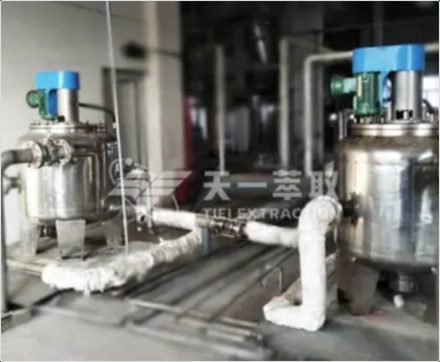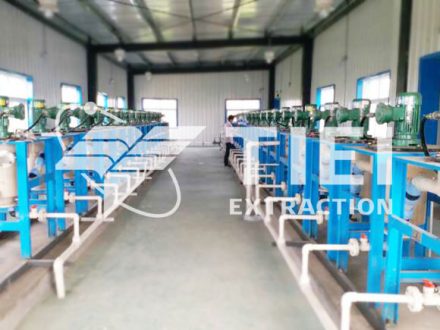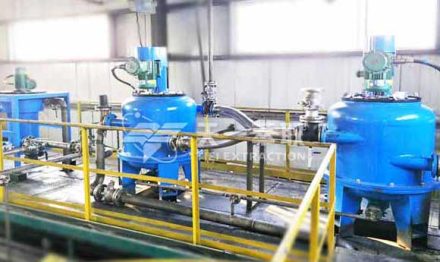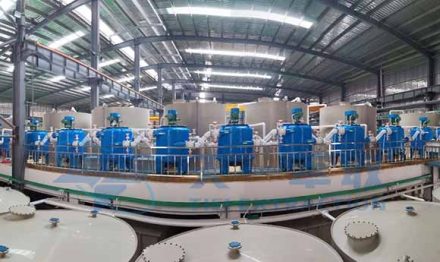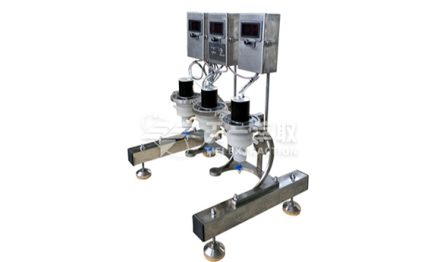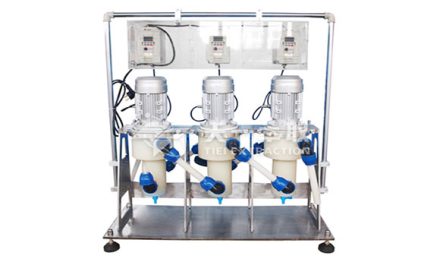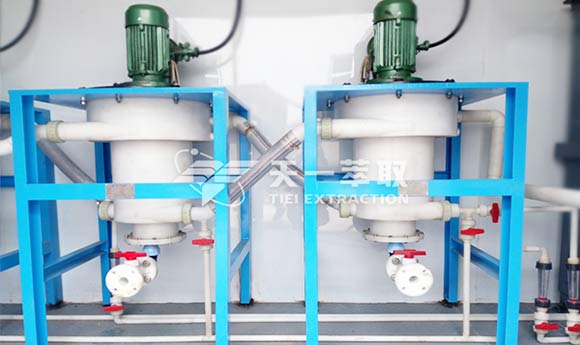
The main methods for extracting pyruvic acid from fermentation broth include vacuum distillation, reverse osmosis, ion exchange, organic solvent extraction, etc. The organic solvent extraction method has many advantages such as simple operation, high yield, and good product quality. This scheme uses the different distribution coefficients of pyruvic acid and other substances in organic solvents, and achieves separation of pyruvic acid and other substances by adding specific organic solvents to the fermentation broth for extraction.
Due to the use of a large amount of organic solvents, the solvent extraction method has high requirements on the selectivity and regeneration ability of the solvent. For example, some scholars suggest using ether as an organic solvent, and the process is relatively simple. At present, this solvent is obviously not competent. Under the relatively simple process, the recovery rate and purity are not high. Moreover, the use of this toxic, explosive, and volatile solvent has caused serious pollution to the environment and brought inconvenience to the operation. Therefore, as long as the extraction process is further optimized on the basis of selecting a suitable extractant, this is still an excellent industrial extraction scheme.
Pyruvic Acid Fermentation Broth Extraction Process Flow
- The pyruvic acid fermentation broth obtained after the fermentation is completed can be centrifuged to remove most of the bacteria and solid components.
- The supernatant obtained by centrifugation is treated with a cation exchange resin to adjust the pH value of the liquid and remove part of the pigment and cationic components.
- The pH value of the fermentation broth treated with the resin column is 1.0-5.0, that is, the pH value of the fermentation broth before extraction is 1.0-5.0.
- The concentration of pyruvic acid in the fermentation broth before extraction is 20-120g/L, and the best is 40-80g/L. Organic ester solvents such as ethyl acetate, butyl acetate, and tributyl phosphate are used as extractants, especially tributyl phosphate. The amount of the extractant is 100-200% of the volume of the fermentation broth at this time.
- After extraction and stripping, the pH value of the stripping liquid is adjusted to 5.0-7.0 with caustic soda solution.
- The stripping liquid is concentrated in vacuum, and the pyruvic acid content in the concentrated liquid is controlled at 200-400 g/L.
- The crystals are washed with ethanol and then dried in a constant temperature drying oven at 50-60°C to obtain a white product (sodium pyruvate).
This process is very easy to use in industrial production. The extractant tributyl phosphate used has a high distribution coefficient for pyruvic acid in the fermentation broth, so it has high selectivity. The solubility of the solvent in aqueous solution is very small, so it is not easy to be lost during the extraction process and is easy to recycle. The extractant can be repeatedly used after back extraction and regeneration. Moreover, the solvent is not easy to volatilize under operating conditions, has low toxicity and danger, and has little pollution to the environment. This process combined with the CWL-M series multi-stage centrifugal countercurrent extraction process can achieve ideal separation and extraction effects. The CWL-M series multi-stage centrifugal extractor used is simple to operate, occupies a small area, has outstanding efficiency, and is easy to scale up from laboratory to industrial production.
Email: sales@tieiextraction.com
Whatsapp: +86 19069612820

